Video: Wreck of Torpedoed WWI Troop Ship Discovered off Greece
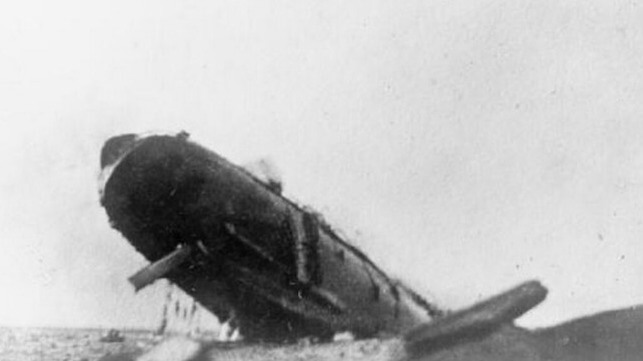
A Greek diver and explorer has fulfilled a decades-long dream to find the wreck of a lost WWI troop transport, the SS Arcadian.
The Arcadian was built in 1899 at the Vickers yard in Barrow-in-Furness, and she was originally christened Ortona. The ship served the Pacific Steam Navigation Company's route from London to Australia for seven years, then entered service with the Royal Mail Steam Packet Company. She was retrofitted as a luxury cruise ship at Harland & Wolff in 1910 and renamed RMS Arcadian. At the time of her first cruise in 1912, she was the world's largest full-time cruise ship.
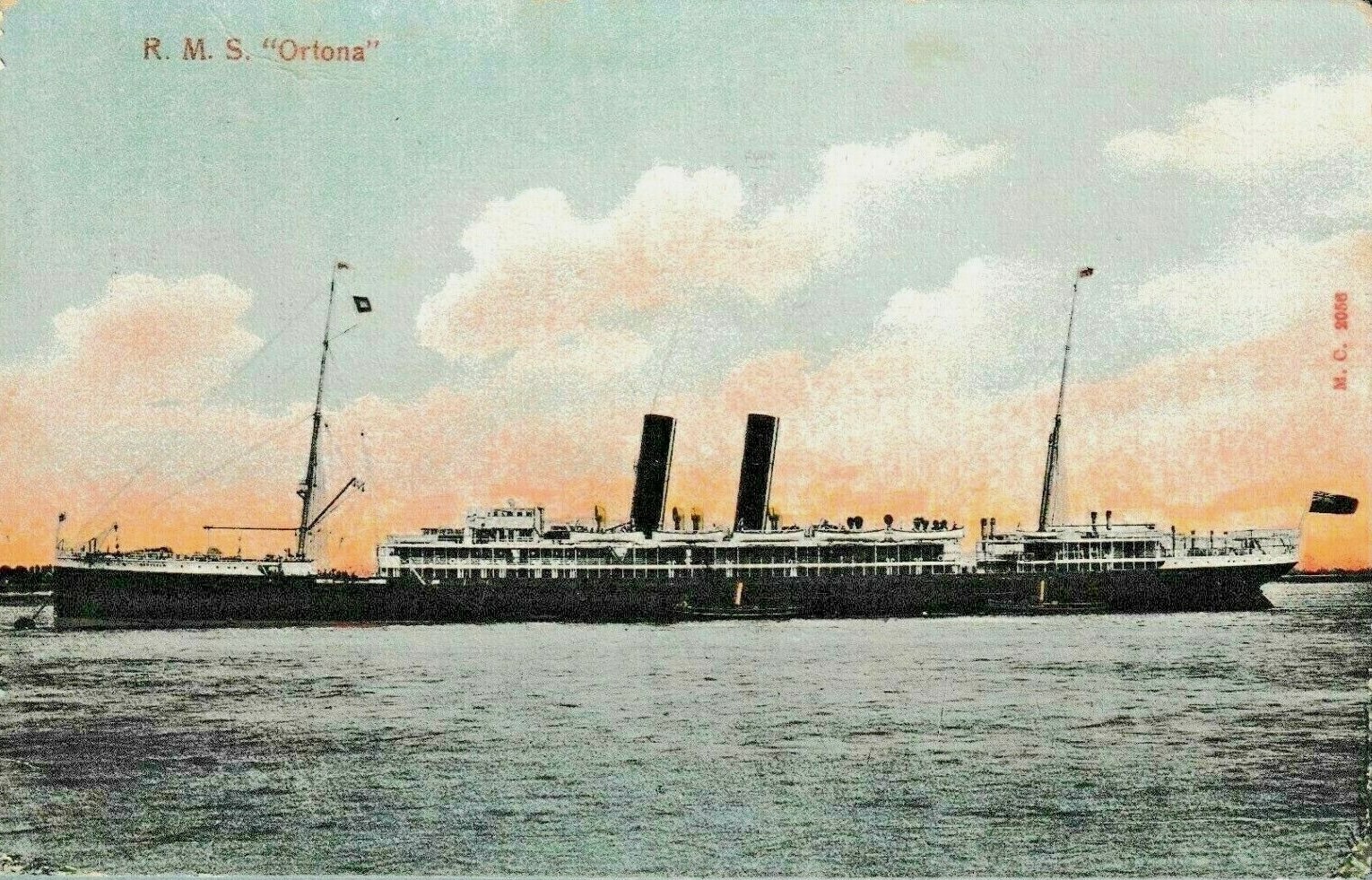 RMS Arcadian, seen here as RMS Ortona (Frederick Charles Gould)
RMS Arcadian, seen here as RMS Ortona (Frederick Charles Gould)
In early 1915, as the UK prepared for an amphibious assault on Gallipoli, the British Admiralty chartered Arcadian for use as a command ship. She was soon repurposed as a troop ship for operations in the Mediterranean and served in that capacity for most of the war.
On April 15, 1917, Arcadian was under way from Greece to Alexandria, Egypt. Just as her crew and passengers were completing a lifeboat drill, she was attacked by the German U-boat UC-74. A single torpedo struck her engine room, and she went under in less than six minutes. The crew managed to lower four lifeboats away, and 1,056 people abandoned ship and survived. 279 lives were lost in the sinking, including many of the engineering crew and the galley crew.
One of the survivors, Thomas Threlfall, had survived the sinking of the Titanic exactly five years earlier, and he was grateful that he could abandon ship into the waters of the Aegean rather than the North Atlantic. "This time we had calm sea and warm weather, and you had a chance, but with the Titanic you died in the water almost as soon as you got in," he told media at the time.
The wreck of the Arcadian was lost to time until this year, when it was rediscovered by Greek researcher Kostas Thoctarides at a position off Sifnos, resting at a depth of about 500 feet. The vessel landed bow first and settled to the bottom in an upright position.
"The main feeling was excitement and a sense of satisfaction. For a long time we have been reading this thrilling story that has so many fascinating aspects," said Thoctarides. "For us it was a journey into the past and the history of the Arcadian, which is unknown to most people in Greece."
Serbia Begins Raising a Fleet of Sunken Nazi Patrol Boats From Danube
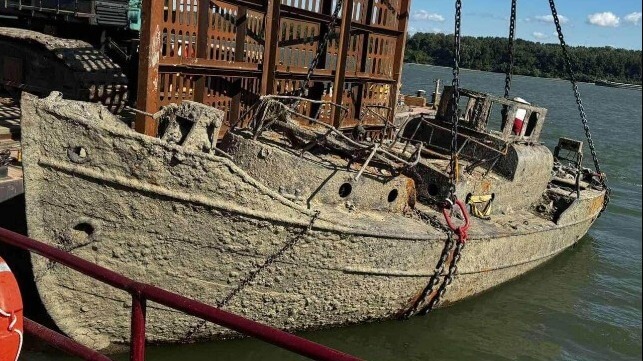
The government of Serbia has begun a large-scale salvage project to raise and remove a fleet of Nazi vessels that were scuttled in the Danube in the closing days of the Second World War, and contractors have brought the first of dozens of armed German patrol boats to the surface.
In August 1944, German forces were retreating from the Red Army across Eastern Europe. Russian forces had advanced as far as the Serbian-Romanian border, seizing the Iron Gates of the Danube upstream of Prahovo. This cut off the only escape route for the Kriegsmarine's Kampfgruppe Zieb, a flotilla of 200 German patrol vessels and support boats. The small fleet was in danger of being captured by Soviet troops, so the flotilla commander ordered all 200 hulls scuttled in the Danube.
When these Nazi boats were sent to rest on the bottom, they partially blocked the Danube, temporarily delaying the advance of Soviet riverine forces. Some were removed by the Russians later that year to open the navigational channel, and some were restored and reused in the fight. However, the vast majority remained in place for eight decades, embedded in sediment and slowly deteriorating. Their hulls and their munitions continue to threaten modern shipping on the Danube, and during recent summer droughts and low-water events, the fleet has occasionally resurfaced into public view.
To ensure safety of navigation on the Danube, Serbia has plans to remove dozens of these 80-year-old wrecks from the bottom. A crane barge hoisted the first one out of the water last week, according to Goran Vesic, Serbian Minister of Construction, Transportation and Infrastructure, and 21 more will follow in the weeks to come. During a second phase, another 80 wrecks will be removed.
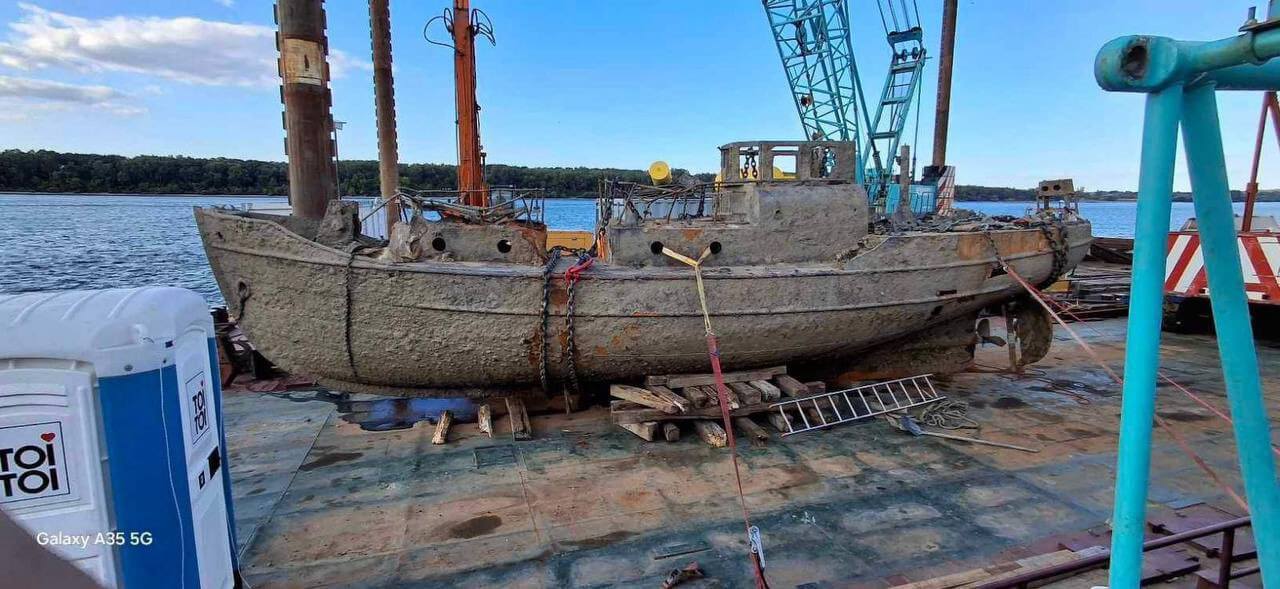 Courtesy Goran Vesic
Courtesy Goran Vesic
"Every ship that is taken out undergoes a detailed inspection with the dismantling of the explosive devices that remained in them. It lasts ten days," said Vesic. "When this process is completed, we will allow the public to see part of the sunken Nazi fleet, which has been making navigation on this part of the Danube difficult for eight decades."
Photos taken of the first vessel reveal the substantial unexploded ordnance hazard aboard these wrecks. The boat came out of the water with intact wooden cases of cannon shells and other munitions.
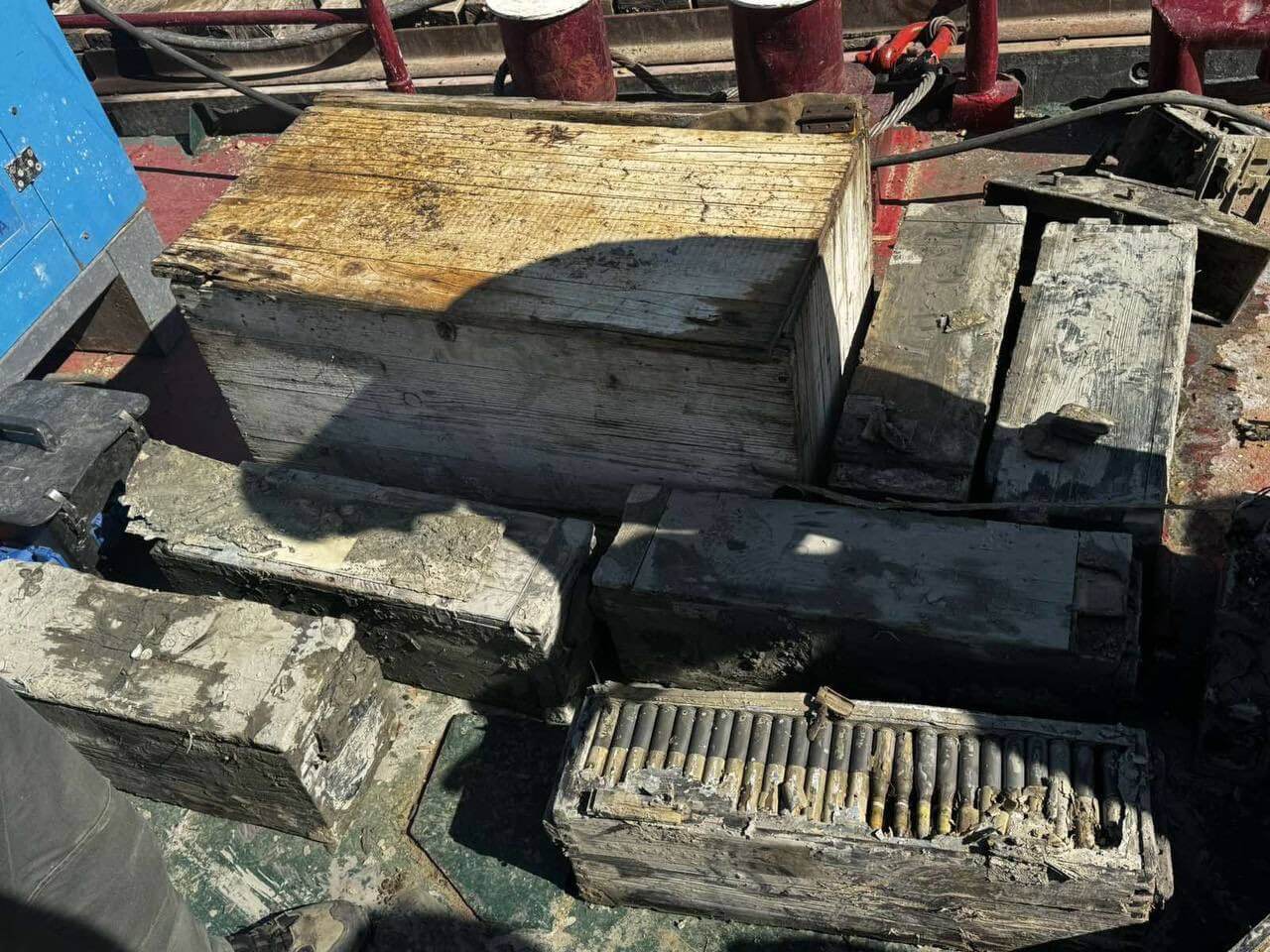
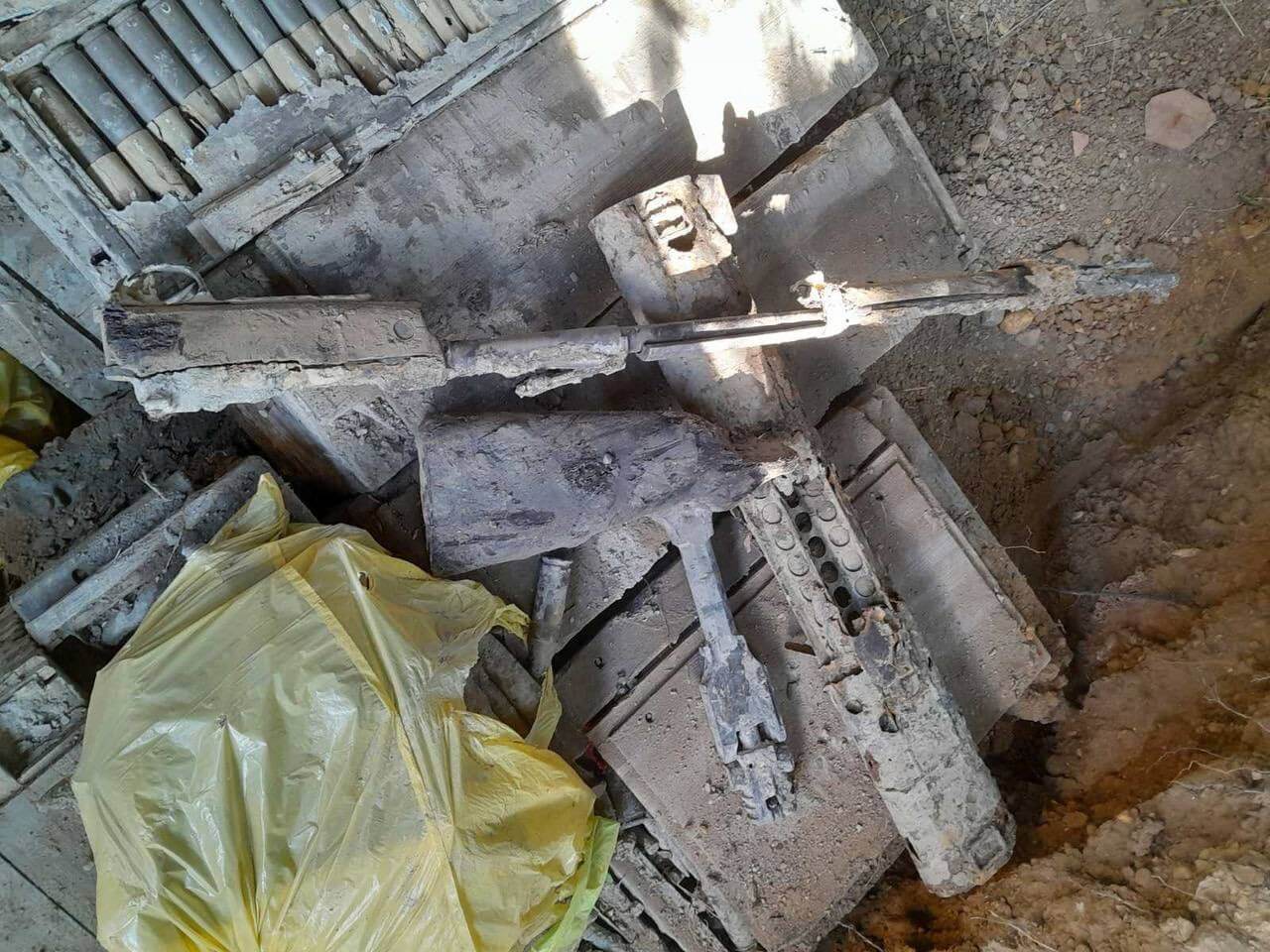

A nearly-intact Mauser 98 rifle (right) was among the boat's cargo (Goran Vesic)
Efforts Underway to Restore Two Surviving Fletcher-class WWII Destroyers
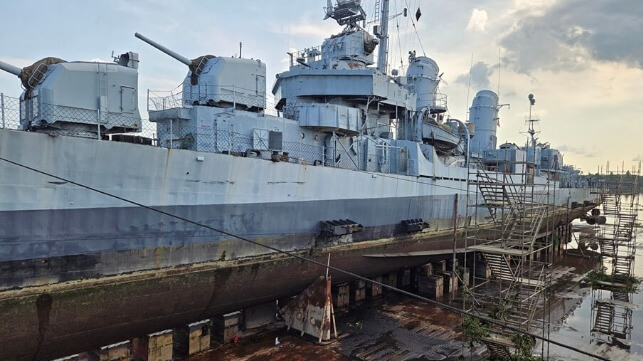
Two of the surviving World War II era U.S. Fletcher-class destroyers are getting much-needed preservation work after years of service as museum ships. The USS Kidd entered dry dock this week after a long delay while in New York funding was announced for the repairs to the USS The Sullivans.
The Fletcher-class was the largest and most important destroyer class for the U.S. Navy during WWII with the U.S. building and commissioning 175 of the vessels in just three years from 1942 to 1944. Today, only three survive in the U.S., with only the Kidd in its original WWII wartime configuration, and one more sister ship is in Greece.
Both the Kidd and The Sullivans are in desperate need of repairs. The Sullivans sank at her berth in Buffalo, New York in April 2022. It required an extraordinary effort to right the ship from her list and make temporary repairs. The repairs need to be made permanent to ensure that she remains afloat. The USS Kidd is normally on display in Baton Rouge, Louisiana but her director told the Advocate newspaper if the repair effort had waited another year “she might have sunk right in the cradle.”
Kidd
Launched from the Federal Shipbuilding & Dry-dock Company in New Jersey the Kidd was the U.S. Navy’s 661 first destroyed (her designation is D-661) and she was part of a record-breaking three-ship launch completed in just 14 minutes on February 28, 1943. She was named after Rear Admiral Isaac Campbell Kidd, Sr. who was killed aboard the USS Arizona during the December 7, 1941, attack on Pearl Harbor, Hawaii.
The Kidd went on to distinguished service earning eight battle stars during World War II and four additional for service in Korea. She, however, was decommissioned in 1964 and would have eventually gone to scrap except she was left largely intact, and instead, she was designated to become a museum ship. She arrived in Baton Rouge in 1982 and opened the following year as part of the USS Kidd Veterans Museum. (Read her full history online.)
The display in Baton Rouge is unique because of the water level changes during the year on the Mississippi River. The Kidd was placed in a specially designed cradle. Half the year she is afloat and then as the river level falls, she sits on dry dock blocks. The arrangement however after 40 years has caused damage to the hull. Getting her out of the cradle was a challenge due to the water level, and they had to remove four feet of her rudder.
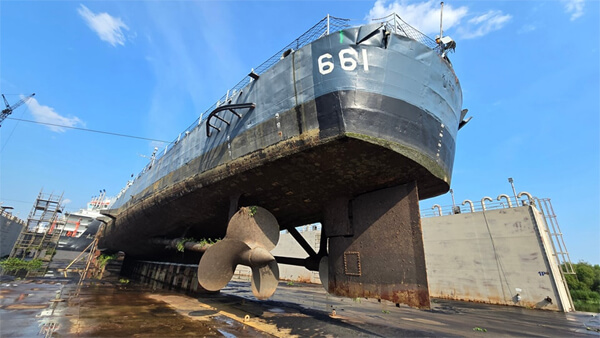
USS Kidd in dry dock -- note the cut to her rudder (USS Kidd Veterans Museum)
The ship was stuck in Baton Rouge in 2023 due to a drought and finally moved to the ThomaSea shipyard in Houma, Louisiana in April. She had been undergoing some dockside work waiting for the dry dock where she was moved on August 13 in a 7-hour process. The full project is projected to cost $11 million for major repairs and renovation including the hull, repainting, installation of a new sewage system, and repairs to the cradle. The Kidd should leave the dry dock in February but will have to wait till possibly May 2025 and a sufficient water level to return to Baton Rouge and her cradle.
The Sullivans
Shortly after the Kidd should return to her museum, The Sullivans is expected to leave Buffalo in September 2025 for a dry dock in Lake Erie where she along with the submarine USS Croaker are scheduled for repairs. Both ships should return to Buffalo in the spring of 2026.
New York Governor Kathy Hochul announced this week that the state is providing $10 million toward the restoration project for the Kidd and a submarine which is expected to total nearly $21 million. Additional local, state, and federal funding for $11 million has also been committed to the project.
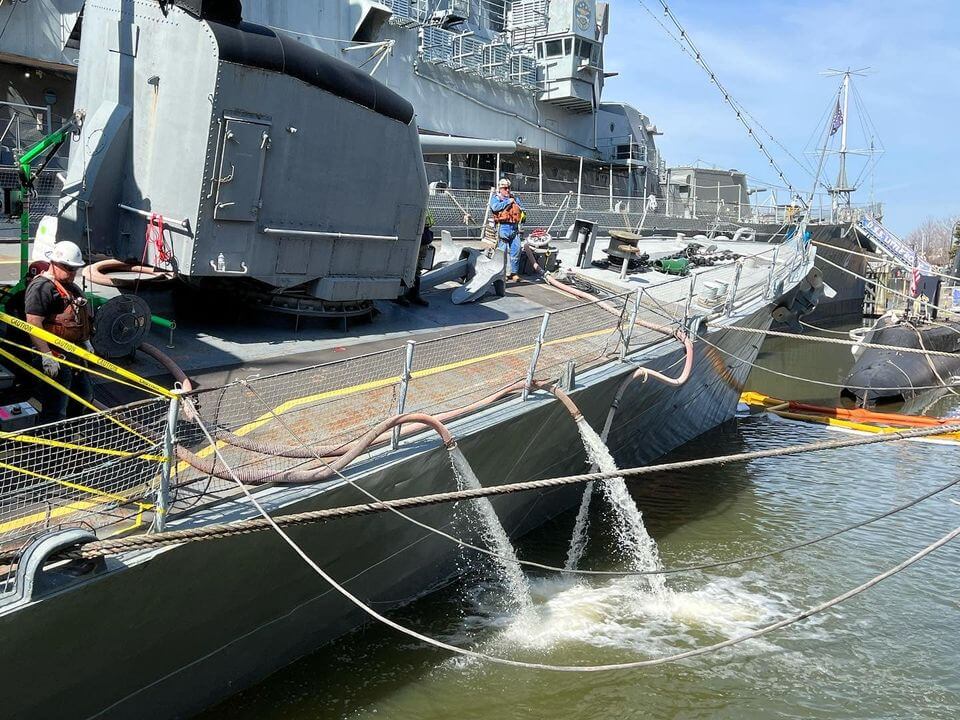
The Sullivans Dewatering after she sunk in 2022
The Sullivans (D-537) is unique as she is the only U.S. Navy vessel named for multiple people, five brothers who famously died together aboard the USS Juneau in November 1942. The destroyer was commissioned in their honor in April 1943 and was decommissioned in 1965 with 11 battle stars. She was moved to Buffalo for display in 1977. (Read her full history online.)
New York’s funding will also go to the restoration work on the USS Croaker, one of 77 Gato-class submarines constructed during World War II. Commissioned in 1944, she conducted six war patrols in the Pacific theater and remained active till being decommissioned in 1971. She was placed on display alongside The Sullivans in 1988, but the Croaker is not in her original World War II configuration. She was converted to a “hunter-killer” submarine with added sonar, radar, and quieting capabilities to combat the Russian threat during the Cold War.
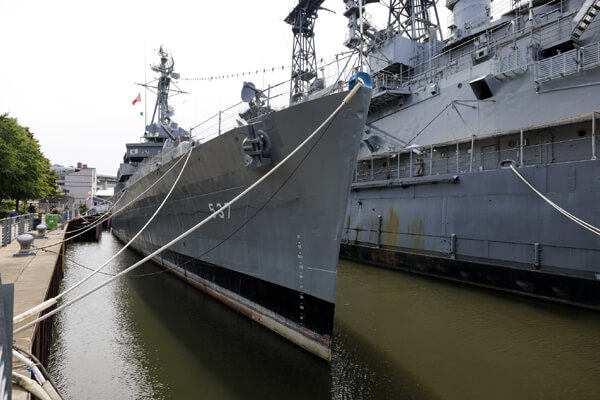
The Sullivans is part of a multi-ship display in Buffalo (NY State)
These projects come after a flurry of other high-profile restorations this year in the United States. The battleships USS Texas and USS New Jersey each completed extensive dry dockings. The John W. Brown, one of only two remaining, fully operational WWII “Liberty ships,” is spending July and August in a dry dock in Norfolk, Virginia. After she arrived, it was discovered that she required more extensive hull repairs. The hull work was completed this week, and she is scheduled to leave the dry dock next week and later will return to her berth in Baltimore.
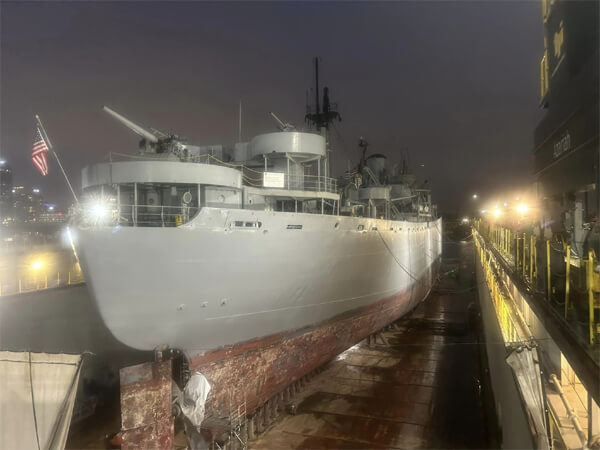
John W. Brown nearing completion of her overhaul in Virginia -- SS John W. Brown (Project Liberty Ship)/Facebook
No comments:
Post a Comment